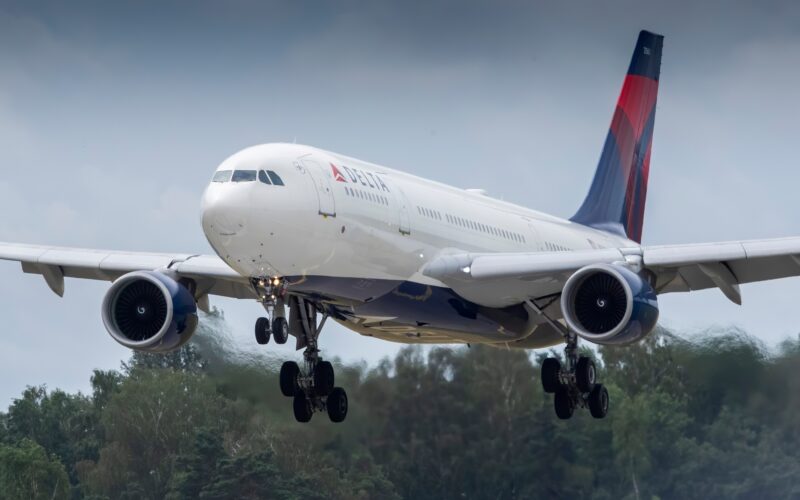The European Union Aviation Safety Agency (EASA) has acted upon being notified of irregularities in quality of manufacturing of the Airbus A330 and A340 main landing gear (MLG), which could result in the collapse of the MLG.
EASA has noted that “occurrences have been reported of quality non-conformity on MLG axles where the high velocity oxygen-fuel coating on the bearing journal runout areas had excessive coating compared to the drawing limits,” according to its latest airworthiness directive (AD).
The excessive coating “could lead to spalling of the protective coating, which could expose the base material and allow corrosion to develop”.
Subsequently, the condition, if not corrected, “could lead to an MLG axle failure, possibly resulting in MLG collapse, with consequent damage to the aeroplane and injury to occupants”.
The AD affects all Airbus A330ceo and A330neo, as well as A340-300 aircraft of all Manufacturer Serial Numbers (MSN).
Airlines operating either the A330 or A340-300s will have to inspect MLGs with Part Number (P/N) 55-2117042-00, with EASA providing a list of 59 aircraft with the affected part installed on them on the date of manufacture.
The inspections will need to be conducted within 24 months of the part’s entry into service date. Thereafter, operators will be required to inspect the affected part at intervals of no more than 24 months. If discrepancies are found during any such inspections, airlines are urged to contact SAFRAN Landing Systems before the aircraft’s next flight to receive instructions on how to amend the condition.
SAFRAN should then provide the compliance time to fix the parts. If the manufacturer does not, EASA urges airlines to ensure that they do so before the next flight of the A330/A340-300.
If airlines have an aircraft whose Manufacturer Serial Number (MSN) matches the list of MSNs provided by EASA, they will have to replace the affected part within 150 months of the part’s entry into service. The European regulator has noted that replacing the whole MLG with an MLG with a serviceable part – that is, one not affected by the AD – complies with the requirements of the directive.
Requesting a grace period
Two Airbus A330 operators, Delta Air Lines and Cathay Pacific, have commented on the directive.
In total, Delta Air Lines provided three comments to EASA. In one, the carrier asked to include the permanent repair of the MLG as a means of complying with the directive, with the airline mentioning a repair procedure defined by Airbus’ Component Maintenance Manual (CMM) 32-13-25.
EASA disagreed, saying that the current CMM does not have the repair procedure as yet. However, when Airbus does include the procedure in the manual, the regulator will amend the directive accordingly.
Furthermore, Delta Air Lines requested that the compliance time would also include “24 months after the AD effective date, whichever is later” in addition to the part’s entry into service date benchmark. The United States (US)-based airline said that, if EASA would not grant a grace period, it would have to ground three aircraft on the AD’s effective date.
“Existing data does not support a general extension of the compliance time as proposed,” the European safety agency replied.
Meanwhile, Cathay Pacific has noted that not all Airbus A330 and/or A340 MLGs can support the affected parts, which should exempt certain aircraft from the directive.
“The AD should be exact as to which aircraft and landing gear are affected by this quality issue specified in the AD,” the Hong Kong International Airport (HKG)-based airline continued.
EASA disagreed, saying that the affected MLGs “can be installed on aeroplanes having specific mod installed in production, or service bulletin [SB] in service”.
“Consequently, the AD has to be applicable to all MSN of those [aircraft] models on which an enhanced MLG is eligible for installation (either mod or SB),” EASA concluded.
The European regulator published the AD on August 30, 2023, with the effective date being September 13, 2023.

